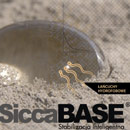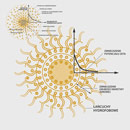Adopting a high-fiber diet can be incredibly beneficial, especially for those following the HCG diet. High-fiber foods not only promote healthy digestion but also contribute to a feeling of fullness, making it easier to adhere to dietary restrictions. Integrating these nutrient-dense options into your meal plan can enhance your overall well-being while on a calorie-restricted regimen.
Fiber benefits extend beyond mere fullness; they also play a significant role in stabilizing blood sugar levels and supporting gut health. When on the HCG diet, the careful selection of fiber-rich foods can help maintain energy levels and prevent the sluggishness often associated with low-calorie eating patterns. This guide will explore practical ways to add more fiber to your diet without compromising your goals.
Choosing the Right Fiber Sources for Your HCG Meal Plan
Selecting high-fiber foods while adhering to the HCG diet can greatly enhance your nutrition and weight loss support. It is crucial to focus on options that align with the dietary guidelines of the plan.
Leafy greens like spinach and kale are excellent choices. They are low in calories and packed with fiber, helping to increase satiety without exceeding your calorie limits. Additionally, including raw or lightly steamed vegetables such as broccoli and cauliflower can provide a satisfying crunch while delivering fiber content.
Fruits are another important component. Opt for berries, which offer a good balance of fiber and essential vitamins. Strawberries and raspberries can be enjoyed in moderation, providing both flavor and nutritional benefits.
For those seeking more substantial sources of fiber, consider incorporating small servings of legumes or beans, like chickpeas or lentils. Although these may not be suitable for all phases of the HCG diet, they can be beneficial when allowed, offering a hearty addition to meals.
Always remember to hydrate well, as fiber requires adequate water intake to promote healthy digestion. Combining these high-fiber foods strategically can not only help maintain your dietary commitments but also support your overall weight loss goals.
Creative Ways to Prepare Fiber-Rich Meals on the HCG Diet
Integrating fiber-rich foods into your HCG meal plan can be both enjoyable and beneficial for weight loss support and digestive health. Here are some creative meal ideas to get you started.
Consider making a hearty vegetable soup that includes high-fiber foods like spinach, carrots, and beans. This dish can be seasoned with herbs and spices to enhance flavor without compromising dietary guidelines. Puree the soup for a smooth texture or leave it chunky for more substance.
Try colorful salads featuring a mix of leafy greens, radishes, and other fibrous vegetables. Top your salad with chickpeas or lentils for an added fiber boost. A light vinaigrette can enhance the flavors while keeping it HCG-friendly.
For breakfast, whip up a fiber-rich chia seed pudding. Combine chia seeds with almond milk and let it sit overnight. Add fresh berries in the morning for a nutritious start to your day that supports your fiber intake.
Don't overlook snack options. Sliced apples or pears with a sprinkle of cinnamon provide both fiber benefits and a satisfying crunch. Pair them with a small serving of nut butter to keep you full between meals.
Exploring whole grains like quinoa or brown rice can be a delightful addition to your main courses. Simply cook them as a base and top with grilled chicken and steamed vegetables, creating a filling and fiber-rich meal.
Experiment with creating fiber-rich veggie wraps using large lettuce leaves as your wrap. Fill them with shredded carrots, cucumber, and your choice of protein for a fresh and low-carb alternative that fits your HCG guidelines.
For more ideas on fiber-rich foods while on the HCG diet, visit https://hcgplan.net/. Proper planning and creativity will ensure you meet your fiber goals while enjoying a variety of delicious meals.
Monitoring Fiber Intake and Adjusting Your HCG Diet Accordingly
Successful adherence to the HCG diet requires a keen focus on various nutritional aspects, including fiber intake. Regularly monitoring your consumption of high-fiber foods can significantly enhance your digestive health and overall well-being. Tracking your meals not only helps in maintaining dietary guidelines but also ensures you are receiving the fiber benefits essential for a balanced diet.
Consider keeping a food diary to log your daily fiber intake. This practice allows you to identify gaps in your diet and adjust it accordingly. Including a variety of fiber-rich foods in your meal ideas will keep your diet diverse and enjoyable. Incorporating different cooking techniques, such as steaming or roasting vegetables, can elevate meals while preserving their fiber content.
As you monitor your fiber intake, pay attention to how your body responds. If you notice any digestive discomfort, it might be beneficial to adjust the types or amounts of fiber-rich foods in your plan. Gradually increasing your fiber intake can help your digestive system adapt more comfortably to changes in your diet.
Engaging with high-fiber foods, such as vegetables, fruits, and legumes, can yield numerous advantages while following the HCG diet. By being mindful of your fiber consumption and making necessary adjustments, you can cultivate a satisfying and nutritious meal plan that aligns with your weight loss goals.












